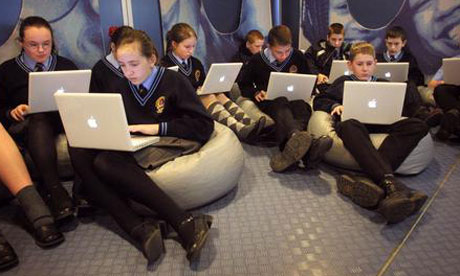Welcome!
The fact that you made it to
this page means your students are headed in the right direction. Simply by a
teacher exploring the idea of “ICT in my classroom” is setting the students up
to become 21st century learners. The reality is, students now are
“digital natives” it will always come more naturally to them, than it does us.
We do, however, need to keep up. This requires a little more exploration on our
behalf and extra time sourcing new resources, because new and better resources
are becoming available every day.
Why I am here, having this discussion:
I feel that far too often I see ICT being misused. Schools create “digital portfolios” but then it’s full of videos of the students doing non-digital work. Is this really a digital portfolio? Working in Cambodia, I watched the students (also digital natives) navigate an IPhone quicker than me. That really made me think how far the world is developing. Students that are in schools with no resources and parents with bare minimum income, if not lower, still have iPhones. They still have access to the big wide web. This is just a reminder at the direction the world is heading, and we need to make every effort to keep up.
Why I am here, having this discussion:
I feel that far too often I see ICT being misused. Schools create “digital portfolios” but then it’s full of videos of the students doing non-digital work. Is this really a digital portfolio? Working in Cambodia, I watched the students (also digital natives) navigate an IPhone quicker than me. That really made me think how far the world is developing. Students that are in schools with no resources and parents with bare minimum income, if not lower, still have iPhones. They still have access to the big wide web. This is just a reminder at the direction the world is heading, and we need to make every effort to keep up.
Here I will provide you with
updated information and tips in relation to ICT. ICT is always changing and new
products are always becoming available, so I will continually keep you updated.

